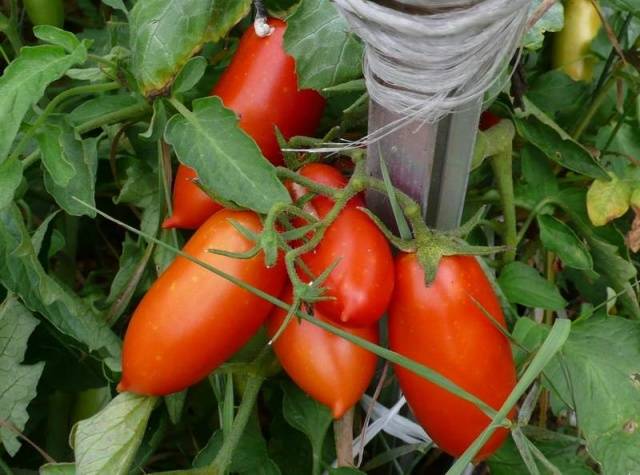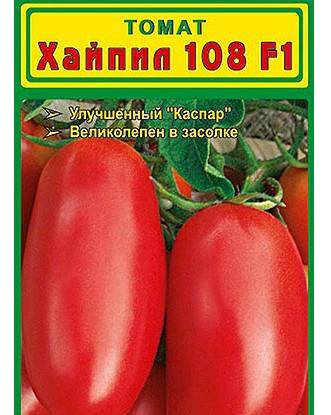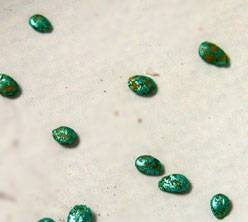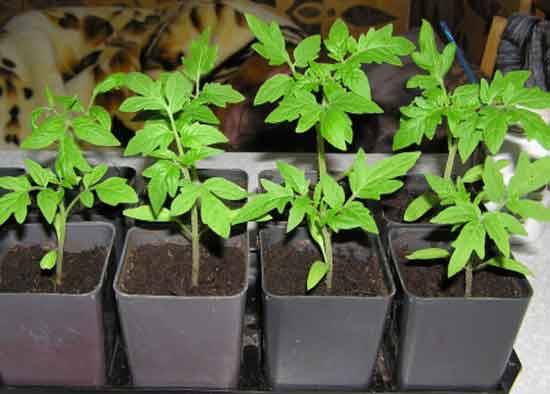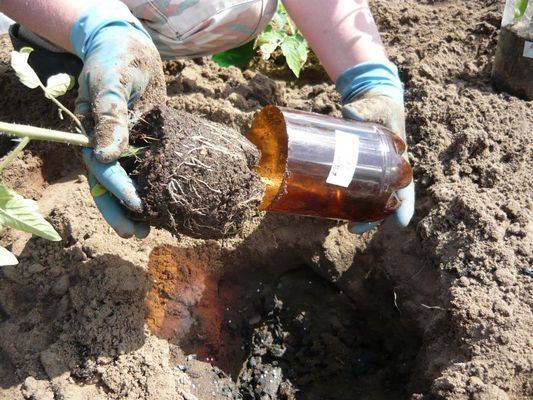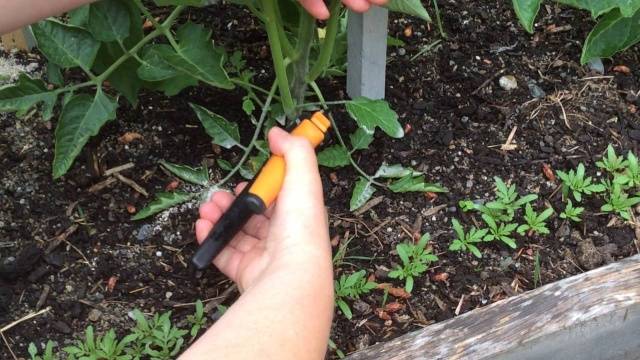Content
Tomato is a crop that all gardeners plant. It is hard to believe that there is a person who does not like this ripe vegetable just picked from the garden. People have different tastes. Some people like huge sweet tomatoes. Others cannot imagine their life without delicious cherry tomatoes. There are people who feel nostalgic when they remember the taste of the tomatoes they picked from their grandmother in the garden. A modern assortment of varieties and hybrids can help everyone. There are tomatoes that are designed not to surprise with their taste, these are "hard workers", they have been providing gardeners with a stable harvest for many years. Hybrids are especially prominent in this regard.
Benefits of hybrids
- High and stable yield regardless of weather conditions.
- Fruit evenness.
- Good transportability and long-term storage.
- Disease resistance.
- High plasticity, they adapt to any growing conditions.
Breeders, creating a new hybrid, are well aware of what properties it will have. For this, parents with certain characteristics are selected. Often, hybrids are created that are focused on a specific use of the fruit: for industrial sales, for the manufacture of tomato products or for whole-fruit canning.
The hybrid Caspar F1 belongs to the last category, the description and characteristics of which will be presented below. The reviews of those who planted it are positive, and the photo demonstrates the fruits of excellent quality.
Description and characteristics
The Caspar F1 hybrid was created by the Dutch seed company Royal Sluis, which is renowned for the quality of its products. This tomato hybrid is not included in the State Register of Agricultural Achievements, but this does not prevent gardeners from growing it in almost all climatic zones. In the south and in the middle lane, he feels confident in the open field. In the northern regions, the Caspar F1 tomato will be able to fully show its potential only in a greenhouse.
Features of the hybrid:
- tomato hybrid Kaspar F1 belongs to the determinant type, has a low bush - up to 70 cm, in the greenhouse it can be higher - up to 120 cm;
- the plant is well leafy, so in the south the fruits are protected from sunburn, in the north the bush needs clarification so that the fruits ripen faster;
- the originators believe that the Caspar F1 tomato does not need pinching, so they can be grown in the southern regions, in all the rest - the bushes will have to be formed, the yield will be slightly less, but the fruits will ripen earlier;
- it is imperative to tie up the tomato plants Caspar F1, otherwise the bush loaded with harvest may simply break;
- the ripening time of the hybrid is medium early, the first fruits in the open field can be tried 3-3.5 months after full germination, in the greenhouse it will sing a little earlier;
- the yield of the Kaspar F1 hybrid is very good, up to 1.5 kg of fruit can be obtained from each bush; 2
- Caspar F1 tomatoes have an elongated shape with a characteristic spout, their weight is from 100 to 120 g, the color is red;
- the fruits have a very dense skin, their taste is sour, and the smell is pronounced tomato;
- chambers in the fruits of a Caspar F1 tomato are not more than 3, mainly tomatoes consist of pulp, which has a dense consistency with a high dry matter content - up to 5.2%;
- tomatoes with such characteristics are ideal raw materials for all types of canning: assorted varieties, marinades, peeled preparations in their own juice; it is for the latter type of canned food that the Caspar F1 tomato is most suitable - the skin is easily removed even without preliminary scalding;
In addition to the description and characteristics of the Caspar F1 tomato, it must be said that this hybrid is resistant to verticillium and fusarium and does not tend to crack.
Royal Sluis breeders have improved this hybrid and created the Hypil 108 F1 tomato based on it. It is distinguished by an earlier ripening period and a slightly pear-shaped fruit. Consumer characteristics of fruits differ slightly.
Improved Caspar F1 and domestic seed producers. A.N. Lukyanenko, in collaboration with a group of breeders under the auspices of the CEDEk company, created a new hybrid named Kaspar 2. It was entered in the State Register of Breeding Achievements in 2015 and is recommended for cultivation in all regions.
The main characteristics of the tomato Caspar 2:
- determinant, bush height up to 80 cm;
- medium early, ripens 100 days after germination;
- requires a small formation of a bush, it is preferable to lead it in 2 stems;
- fruits of a cylindrical shape, weighing up to 90 g, are ideal for whole-fruit canning and pickling, especially since, in comparison with the Caspar F1 tomato, it has a higher sugar content.
Hybrid agrotechnics
Tomato Caspar F1 is grown only in seedlings. High-quality seedlings are the key to ensuring that plants reach their full potential for yield. Sowing dates are determined by the location of the growing region. In the middle lane, this is the end of March.
Seedling growing stages:
- seed preparation - many seed companies sell tomato seeds, completely ready for sowing, treated with disinfectants and growth stimulants;
Such seeds do not need soaking or germination, they are sown dry. - sowing seeds in pre-prepared soil, it is best to collect it in your own garden and freeze it in winter;
- the rearing of seedlings after the emergence of seedlings includes the following conditions of detention: the temperature at night is about 18 degrees, in the daytime it is 3-4 degrees higher, the maximum amount of light, timely watering with warm water and 2 fertilizing with mineral fertilizers of low concentration;
- a pick at the stage of appearance of the second true leaf. Each transplant slows down the development of plants for 1 week. Tomatoes, immediately sown in separate cups, feel much better.
- hardening of seedlings, which begins 2 weeks before planting, gradually accustoming it to open ground conditions.
Transplanting
As soon as the earth warms up to 15 degrees Celsius, and return spring frosts are left behind, it is time to move the seedlings into open ground. The beds for tomatoes and soil in the greenhouse for planting are prepared in the fall. It is filled with humus, phosphorus fertilizers. Nitrogen and potash - must be applied in the spring.
Tomatoes Kaspar F1 are planted according to the scheme: 60 cm - row spacing and 40 cm between bushes. In each hole you need to put a handful of humus, a pinch of complete mineral fertilizer and art. a spoonful of ash. All components of the starter fertilizer are well mixed with the soil. A few hours before planting, the seedlings are well watered in order to preserve an earthen ball and not injure the roots during transplantation.
This method of transplanting promotes the formation of additional roots, which strengthens the plants, but at the same time the growth of the ground part of the tomatoes will be slightly slowed down. The soil under them needs to be mulched, both hay or straw and mowed grass, which needs to be slightly dried, are suitable.
After transplanting, the tomato bushes of Caspar F1 are shaded by throwing a non-woven covering material over the arcs - they will take root faster.The first watering after planting is carried out in a week, but in hot weather you can do this earlier.
Further care of plants:
- weekly watering, in the heat it is carried out more often, 2 times more water is required for Caspar F1 tomatoes when pouring fruits;
- regular feeding with full mineral fertilizer in the form of a solution every 10 or 15 days, depending on the fertility of the soil;
- removal of stepchildren to the lower flower brush. Removing stepchildren reduces the overall yield. In the south and in hot summer, you can leave all stepchildren on the plants.
- removal of the lower leaves after the fruits on the cluster have reached the size corresponding to the variety.
- in regions with hot summers, this operation is not carried out so that the fruits do not get burned.
- preventive, and, if necessary, and therapeutic treatment of tomato bushes from late blight.
You can watch the video about caring for low-growing tomatoes in the open field:
Subject to all the rules of agricultural technology, the Caspar F1 tomatoes will give an excellent harvest of tasty fruits.
Testimonials
It seems to me that no summer salad can do without tomatoes. Therefore, I plant a lot of them. I especially liked Caspar F1. And it's not about taste. It is from him that I make excellent Sun-dried tomatoes, and I tear it down for long-term storage. Sometimes the tomatoes lie before the New Year. I want to try to plant the hybrids Caspar 2 and Hypil. I'll see if they have any differences and choose the best one.
